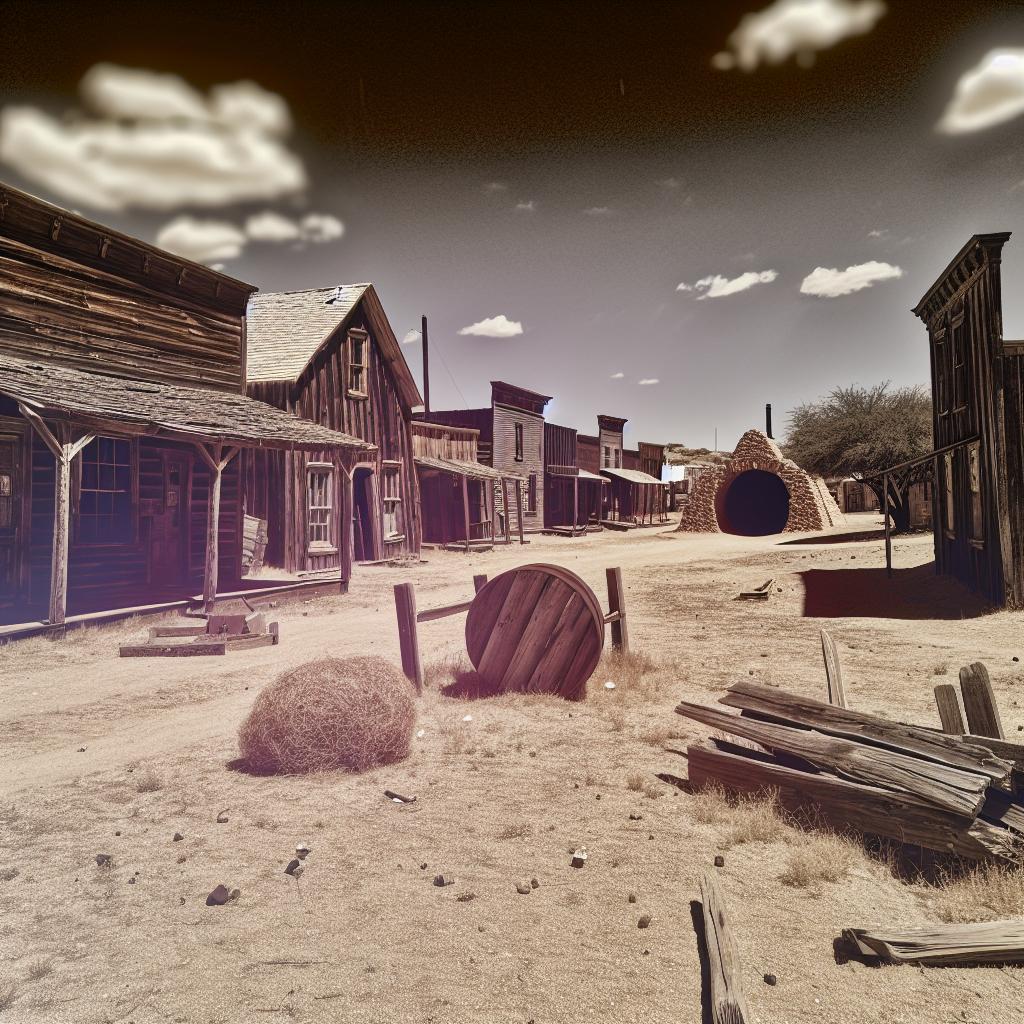The Allure of Texas Ghost Towns
The vast and varied landscape of Texas is dotted with the fascinating remnants of forgotten communities, colloquially known as ghost towns. These ghost towns provide an intriguing look into the past, serving as silent testimonies to the lives and events that have taken place over the centuries. They are rich with stories and have the potential for hidden treasures waiting to be discovered. For history enthusiasts and casual explorers alike, these decaying locales whisper captivating tales of days gone by, providing a tangible connection to history.
The Historical Context
In the backdrop of Texas’s development, the 19th and early 20th centuries marked periods of significant economic fluctuations. The state’s economy was heavily influenced by trends in mining, railroads, oil, and agriculture—industries that experienced both rapid growth and sudden decline. During economic booms, towns sprung up almost overnight. However, when industries waned, these communities were often abandoned as residents pursued new opportunities elsewhere. This left behind skeletons of once-bustling infrastructures and occasionally, treasures forgotten in the hurry to move on.
Notable Ghost Towns
Terlingua: Nestled in Texas’s remote Big Bend region, Terlingua is a testament to the rise and fall of the mercury mining industry. Its ghostly remains and the restored Terlingua Cemetery provide a vivid depiction of what life was like when the town was alive with mining operations. Visitors can wander through the ruins that speak of a bustling past until mining operations ceased, and the town was ultimately abandoned.
Shafter: Established in 1880, Shafter flourished because of its silver mines. At its peak, it housed hundreds of residents. Today, there are only the remains of buildings crumbling under the weight of time, accompanied by tales of hidden silver veins still awaiting discovery. This ghost town offers a glimpse into the silver rush era, complete with its legendary stories and structural remains that draw history buffs from near and far.
Indianola: Once referred to as the “Queen City of the West,” Indianola held a key position as a port city until devastating hurricanes in the late 19th century led to its decline. While much of the town has been reclaimed by nature, the legend of lost Civil War treasures continues to intrigue explorers and historians alike, retaining its air of mystery even in near-devastated condition.
Buried Riches and Legends
The notion of hidden treasures within ghost towns is a tantalizing prospect that attracts many treasure hunters and enthusiasts. These stories, often passed down through generations, maintain a gravitational pull, encouraging explorers to conduct searches based on the whispered promises of wealth hidden beneath the surface.
The Legend of the San Saba Treasure
Among the many alluring legends is that of the San Saba Treasure. Prospective treasure hunters are drawn to Menard County, where the ruins of Mission Santa Cruz de San Saba purportedly conceal riches hidden by the Spanish. Despite the numerous attempts to uncover these treasures, no significant discoveries have been documented. Nevertheless, the search for the San Saba Treasure perpetuates its legend, capturing imaginations and encouraging continued exploration.
Treasure Hunting Considerations
For individuals tempted by the allure of Texas’s ghost towns and their potential hidden riches, there are several key considerations to bear in mind:
Legal: Anyone intent on searching or excavating should be cognizant of state and local regulations to ensure compliance. Many sites, particularly those on private property, necessitate specific permissions or permits to explore legally.
Safety: The exploration of abandoned areas can pose several hazards. Potential treasure hunters must implement robust safety precautions to protect themselves when navigating these dilapidated structures.
Environmental Respect: It’s imperative to preserve the integrity, both natural and historical, of these sites. Visitors should rigorously avoid engaging in actions that might lead to the desecration of historical landmarks or the surrounding landscape.
Conclusion
Though the legends of hidden riches are often the driving force for interest in Texas ghost towns, the true value of these places lies in their historical and educational significance. They offer an irreplaceable window into a world that was, fostering a deep sense of exploration and reflection. The enduring legacy of these ghost towns, much more than any material treasures, constitutes their real wealth. Ultimately, the stories and experiences found amidst their ruins provide an irreplaceable connection to the cultural and economic tapestry of Texas’s past. Through visiting these ghost towns, one gains an understanding and appreciation of history that transcends mere curiosity, offering profound insights into the ongoing narrative of human settlement and migration.


